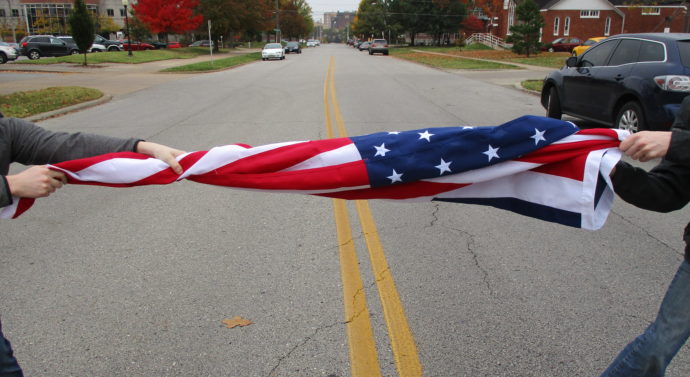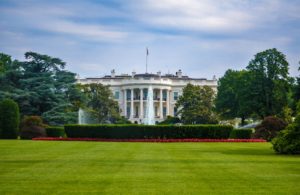
The problem with partisanship: Living during a time of political division and violence
Front Page, News November 2, 2018, Comments Off 183This past week, our nation was struck with terror and tragedy. Pipe bombs sent through the postal service were intercepted on their way to prominent Democrats, like former President Barack Obama and former Secretary of State Hillary Clinton. This past Saturday, a man opened fire on a synagogue in Pittsburgh, Pennsylvania, killing seven people and wounding 11. These attacks are additions to a long list of politically-motivated acts of violence that have only seemed to increase over the past few years.
In order to take a better look at the violence that permeates our society, The Mirror talked with professors and students here at Drury to gain a better understanding of our nation’s politics from the eyes of local citizens.
Society: polarized by hate and a lack of action
People often blame the current government administration for problems that we see in our society, especially concerning political violence and division.
However, some of Drury’s faculty believe that the problem is not one that lies solely with President Trump.
“We’re seeing a level of political violence and the rise of hate groups that’s really troubling,” said Dr. Jeff VanDenBerg, chair of the political science department. “You can’t make a causal argument between discourse from this administration and any violent act because that’s an illegitimate argument.”
“But on the other hand, this administration is unique in how it’s used attack and division and negative approaches to politics. What’s most troubling is the ways that it hasn’t sought to bring people together or address the rise of hate and Anti-Semitism.”
“It’s clear that the administration has not done all that it could to make a clear position opposed to racism, hatred, division and so on,” explained Dr. VanDenBerg. “The most dramatic example of this is Charlottesville.”
The Charlottesville rally, known as the “Unite the Right Rally,” took place in August 2017 by members of far-right groups in Charlottesville, Virginia. The demonstration included neo-Nazi, neo-Confederate and white supremacist groups, and ended in the death of a counter-protester.
“If ever there was a moment where a president should make a clear statement about values, that was it,” said Dr. VanDenBerg. “And, tragically, the president equivocated and said, ‘There’s fine people on both sides.’”
The Trump administration’s fault?
“I think there’s no question that, in this moment, the rhetoric used will often intensify,” said Dr. Dan Ponder, director of Drury University’s Meador Center for Politics & Citizenship.
“Since January 20, 2017, there has been a spike in harassment or violence against people of the Jewish faith or Muslim faith. It’s hard to ignore that America is becoming more and more polarized over the past few decades,” he said. “The rhetoric has helped to lead us to this place, but the seeds have been growing for a while. The rise of social media and misinformation and the denial of facts has definitely led to a less fact-based discourse.”
Photo via Unsplash.
Dr. Ponder continued, “Political discourse has always been heated, but there have been other times in our country’s history where it could take place and we were more bi-partisan. But I don’t want to say that we’re as polarized as we have been in the past.”
“Us vs. them”
“We tend to be much more tribal than we used to be,” said Ponder. “Everything seems to be interpreted through a partisan lens. People who are Republican are more likely to trust the government when there is a Republican in office and vice versa.”
“There’s a lot of evidence that, because of social media, people are not just likely to disagree, but that they will see opponents as immoral, that there’s less ‘agree to disagree,’ then there used to be. People will question their motives and their patriotism,” he continued.
“I always like to be optimistic that cooler heads will prevail, but right now it’s tough to see us moving past this,” admitted Ponder. “I can see us moving past it eventually; after all, we moved past the Civil War. But this isn’t something that can be handled by the end of the next election cycle.”
How do Drury students feel about it?
The political science professors at Drury are not the only ones invested in the deepening political divide in our nation. Members of Drury’s student body have their own opinions about the events plaguing American politics.
“I think it’s important to note that these ideologies have always existed in the United States,” said Ben Niemeyer, a senior political science student. “They were there under the Obama administration, and they were there under [George W. Bush] and going on back.”
“But I do feel that the recent political discourse has had some role in emboldening people that hold these ideologies and perhaps spurring them, if not to action, then at the very least to more proudly displaying how it is that they feel about certain things,” stated Niemeyer.
“And as we’ve seen in some cases, it does result in actions against whatever perceived enemy a given person has; if it’s the Jewish community, or the Muslim community, or people who support President Trump, if that’s who the target is. I think we’re trending towards extremism on a lot of fronts rather than away from it, and that is concerning for me,” said Niemeyer.
Cameron Higbe, president of the Drury College Republicans, said, “I think recently it’s come to our attention more when we see the high-profile cases like the mail bombings against the Clintons and the Obamas and these high-profile figures who are being targeted. That means more to us maybe because it’s names that we recognize.”
“And then, of course, last year we had the shooting of Republican congressmen at the baseball charity event. It’s a stemming problem that doesn’t necessarily have it’s roots in one political ideology. It’s an unfortunate element that exists, and I think trying to pinpoint it to a specific ideology isn’t always the most helpful,” stated Higbe.
What can we do about it?

Photo via Unsplash.
“I think that there’s too many things going on that are causing this for one particular remedy,” said Dr. VanDenBerg. “I think we have structural problems that are creating this partisan divide and that are ruining bipartisanship, and that is specifically the way that we have elections and the nature of our institutions.”
Dr. VanDenBerg suggested that a way to mend the rift would be transform our system of government from a presidential system to a parliamentary one.
“Parties would get office proportional to the percentage won during the national election,” Dr. VanDenBerg explained. “Our system makes it impossible for any third party to be elected. It’s problematic for representation because there are so many increasing differences in the parties.”
“There’s trade-offs to every system, and we’re starting to see the cracks in our model,” said Dr. VanDenBerg. “I think we’re seeing the crisis of our model: gridlock, a congress with an approval rating of 9 percent, people increasingly both aligned with parties and dissatisfied with partisanship. I think the system is showing its cracks and faults.”
Regarding his suggestion to go to a parliamentary system, Dr. VanDenBerg said, “The chances of my proposition carrying out are near zero. It’s not a realistic solution, but because the problems are fundamental and institutionalized, we need fundamental and institutional change.”
Written by Ryan Smith.